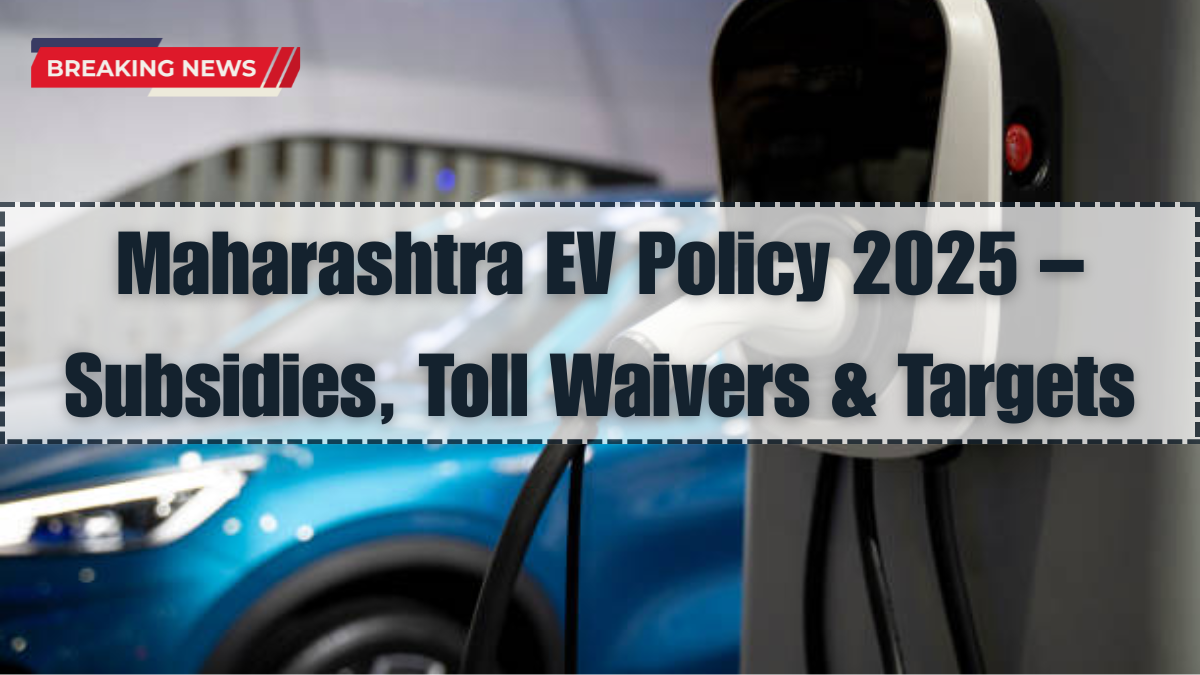The new Maharashtra EV policy announced in 2025 marks a major leap toward making the state India’s leading electric vehicle (EV) hub. With generous subsidies of up to ₹2 lakh on electric four-wheelers, complete toll waivers, and an ambitious target to electrify 25% of all new vehicle registrations by 2027, the policy is being praised for its scope and clarity.
Maharashtra’s government has prioritized clean mobility by backing both personal EV ownership and public charging infrastructure. Whether you’re a private buyer, fleet operator, or EV manufacturer, the revised state EV policy brings significant financial and operational advantages in 2025.

Key Highlights of Maharashtra EV Policy 2025
The 2025 version of the Maharashtra EV policy offers support across the entire ecosystem:
-
₹2 lakh subsidy on electric four-wheelers (based on battery capacity)
-
Up to ₹30,000 subsidy for electric two-wheelers
-
Full waiver on road tax and vehicle registration fees
-
100% toll exemption for all EVs on state highways and expressways
-
Capital subsidy for setting up public charging stations
-
Incentives for battery recycling units and swapping stations
In addition, the policy mandates that at least 25% of all new government fleet vehicles must be electric by 2026.
Who Can Benefit from the New Policy?
The Maharashtra EV policy targets a wide spectrum of stakeholders:
For Individual Buyers:
-
Subsidies apply directly at the point of sale
-
Easy access to government-registered EV dealerships
-
Waivers on road tax and tolls reduce overall operating cost
For Commercial Fleets:
-
Discounts on bulk EV procurement
-
Access to public fast-charging networks
-
Encouragement for last-mile e-mobility businesses
For Manufacturers and Startups:
-
Land allocation incentives for EV manufacturing units
-
State-level GST reimbursement for qualifying companies
-
Employment-linked financial benefits for local hiring
The approach is holistic, encouraging not just usage but also domestic production and infrastructure growth.
Charging Infrastructure & Battery Support
The policy includes a detailed roadmap for building a robust EV charging network:
| Area | Mandate |
|---|---|
| Urban Cities | 1 charger per 3 km² |
| Highways | Fast-charger every 25 km |
| New Buildings | EV-ready parking with chargers |
| Government Buildings | 100% EV-compliant parking facilities |
Alongside this, the state EV policy promotes battery swapping and recycling units through financial grants and land support.
Maharashtra’s Vision for 2027 and Beyond
With this new policy in place, Maharashtra aims to:
-
Convert 25% of all new vehicle registrations to electric by 2027
-
Electrify 100% of public buses in cities like Mumbai, Pune, and Nagpur
-
Make Maharashtra a top destination for EV startups and component makers
-
Reduce vehicular emissions by over 30% across major metros
The Maharashtra EV policy stands as one of the most progressive, incentive-rich frameworks among Indian states in 2025.
FAQs
What is the Maharashtra EV policy 2025 about?
It’s a comprehensive framework that provides financial subsidies, tax waivers, toll exemptions, and infrastructure mandates to boost EV adoption across the state.
Who can claim the ₹2 lakh subsidy?
Individuals and commercial buyers of electric four-wheelers with eligible battery capacity can avail of up to ₹2 lakh under the policy.
Are toll exemptions available for all EVs?
Yes, all electric vehicles—two-wheelers, three-wheelers, and four-wheelers—are exempt from state toll taxes under the 2025 policy.
What are the incentives for setting up EV charging stations?
The state offers capital subsidies, GST reimbursements, and simplified approvals for installing public and private EV charging infrastructure.
Is there any support for battery recycling?
Yes, the Maharashtra EV policy promotes battery recycling and swapping units through grants, land support, and investment-linked incentives.
Click here to know more.

